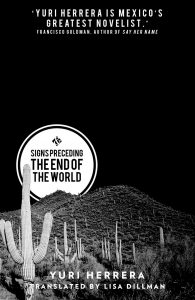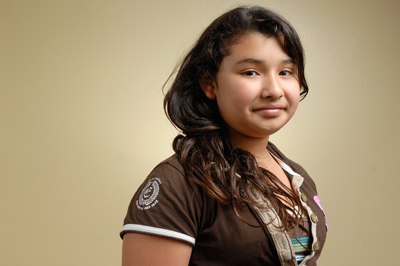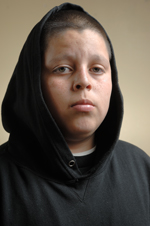In the borderlands of the West – America’s south and Mexico’s north – reality is fluid: much is not what it seems, permanence is an illusion, and culture and language are trafficked as commonly as contraband.

The monied North hungers for labor and drugs and flat-screen TVs assembled at sub-minimum wages; the impoverished South, conquered and corrupted, huddled in tribes held together by blood, fear, and power, feeds the northern beast, both willingly and by necessity.
In this thin, magical novel (2009), Yuri Herrera distills the complexities of the American-Mexican symbiosis into the clarity of a single purpose: self-preservation: the North to keep what it has, the South to survive what it doesn’t.
It is a story set against archetypes: the Village, the Little Town, the Big Chilango; gunmen named Thug .45 and Thug .38 for their favored weapons; the “top dogs,” the caciques, Mr. Double-U, Mr. Aitch, Mr. Q, whose favors carry indebtedness. Two-dimensional places and figures, they are stand-ins for the stereotypical American perspective of the lands to its south: dusty, dangerous, and dismal.
Within this anonymity lives sharply defined Makina, a fierce, independent young woman from the Village, a human switchboard who take calls and passes messages, connecting the North and the South. She speaks the local lingo (an indigenous dialect), anglo, and the latin (Spanish), and “knew how to keep quiet in all three.” Makina enforces a set of rules that gain her the trust of all:
“You don’t lift other people’s petticoats.
You don’t stop to wonder about other people’s business.
You don’t decide which messages to deliver and which to not.
You are the door, not the one who walks through it.”
Makina’s mother sends her North to search for her brother, and there, on the far side of the river, she finds herself entangled in the amorphous nature of the region and its people, both white and brown:
“They are homegrown and they are anglo and both things with rapid intensity; with restrained fervor they can be the meekest and at the same time the most querulous of citizens, albeit grumbling under their breath. Their gestures and tastes reveal both ancient memory and the wonderment of new people. And then they speak. They speak in an intermediary tongue that Makina instantly warms to because it’s like her: malleable, erasable, permeable.”
The story is too compact to reveal more, but the depth of Herrera’s perception is unlimited. Signs Preceding the End of the World is a marvelous ode, lyrical at times, hard-edged at others, to the incessant river of language, ideas, and bodies that flow across “la frontera,” impeded by government, exploited by mafia, but as impossible as the tide to stop.
It is one of the most compelling books I’ve read about trans-border culture – and more timely now than when it was written.
- Note: Herrera’s remarkable use of language reflects the supple nature of border culture. He plays with known words and creates new ones. Language becomes identity. Should you read the book, be sure to read also translator Lisa Dillman’s comments following the narrative.


